August 27, 2023

- Elise Abeth
I was on Ma Wan Island one Sunday after deliberating with my mind whether to isolate myself because of my poor health condition or take fresher air somewhere outside the city. The latter decision won, so I opted to travel to the island. That was an abrupt yet great decision because I even felt better after that trip. I've been yearning to visit this island, and I felt grateful that I finally materialized it. Besides, seeing the clear waters and blue skies with puffy white clouds and the foliage of the mountainous backdrop is always a mind and body restorer.
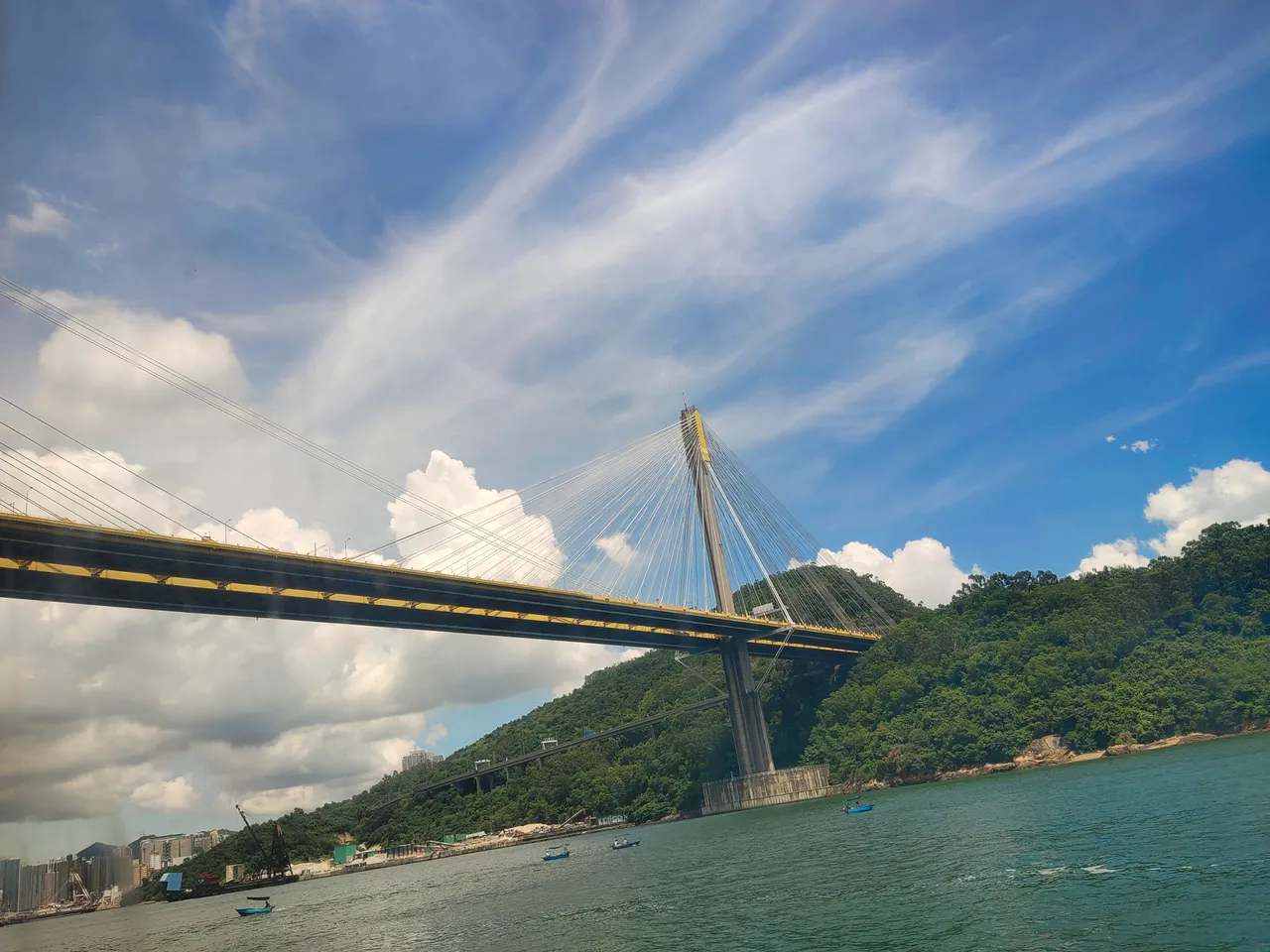
Going to historical places has always been my forte, and Hong Kong is undoubtedly packed with them. It is such a great feeling to see things from the past era that are special and incomparable to modern innovations. Aside from discovering new things that I haven't seen before my eyes, learning the stories behind historical remains is truly beyond typical experiences.
While roaming around the island to find a certain place I wanted to visit, I came across this small center, which I didn't expect to be a heritage center. Upon reading the sign Heritage Center, I entered the place without a second thought because I knew there were always interesting things to see and history to learn inside each heritage center.
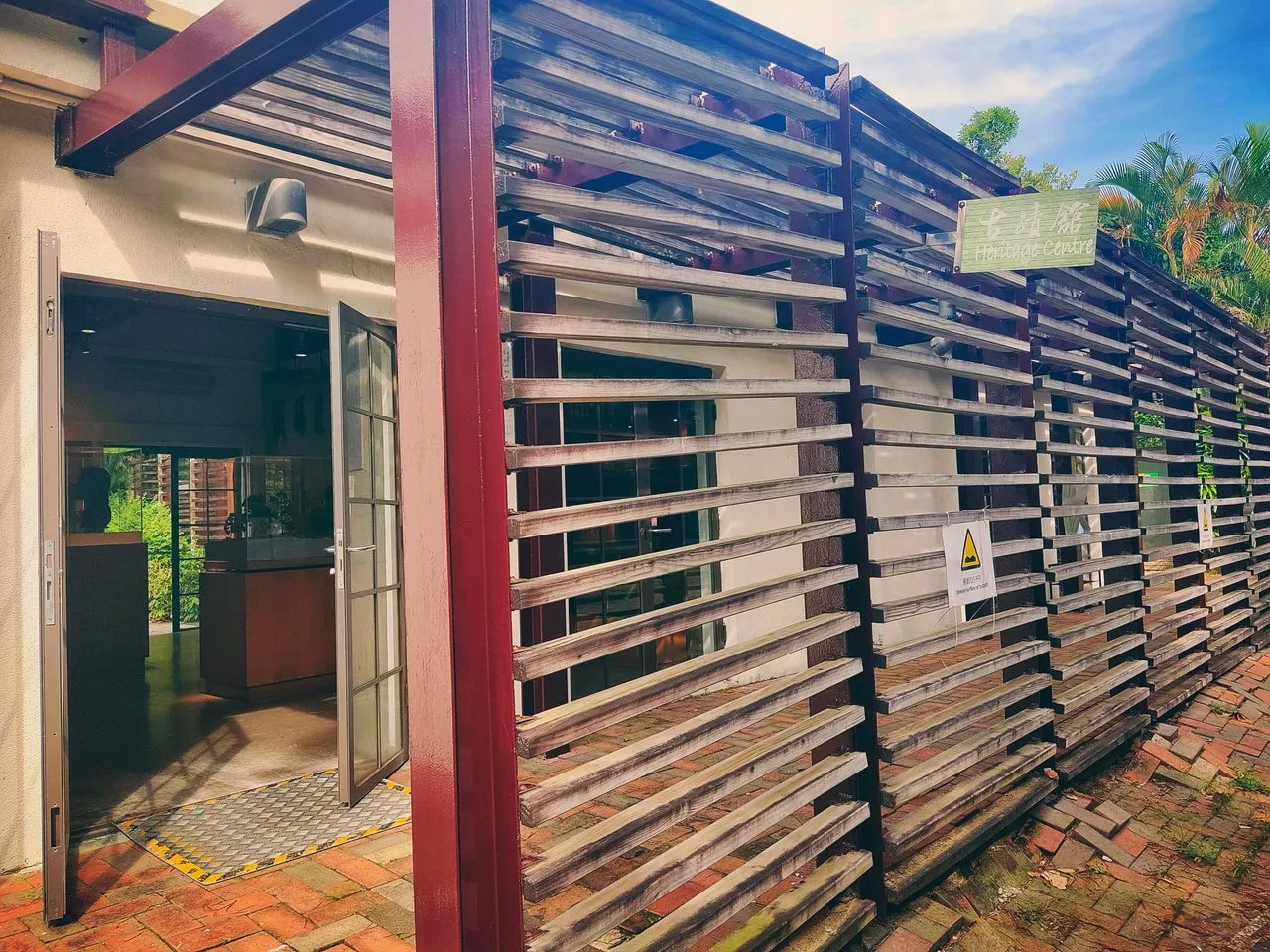
The place is just so small the size of an ordinary room with a partition in between. There was no staff to monitor the place either. I didn't check though if there were CCTVs. The air conditioners weren't functioning, so it's a place where people wouldn't want to stay longer because it can be too hot, especially in summer. The only functioning machine was the television in the entrance hall. It was playing videos about the island and historical remains inside the center and about the archeological excavation on the island. At the time of my visit, I was the only visitor who seemed to be interested in seeing historical remains.

Ma Wan Island is a prehistoric island based on the remains excavated around it in 1997. Some tombs with human skeletons were found on the northern part of the island during the excavation. They are said to belong to ancient people in the late Neolithic to early Bronze Age periods.
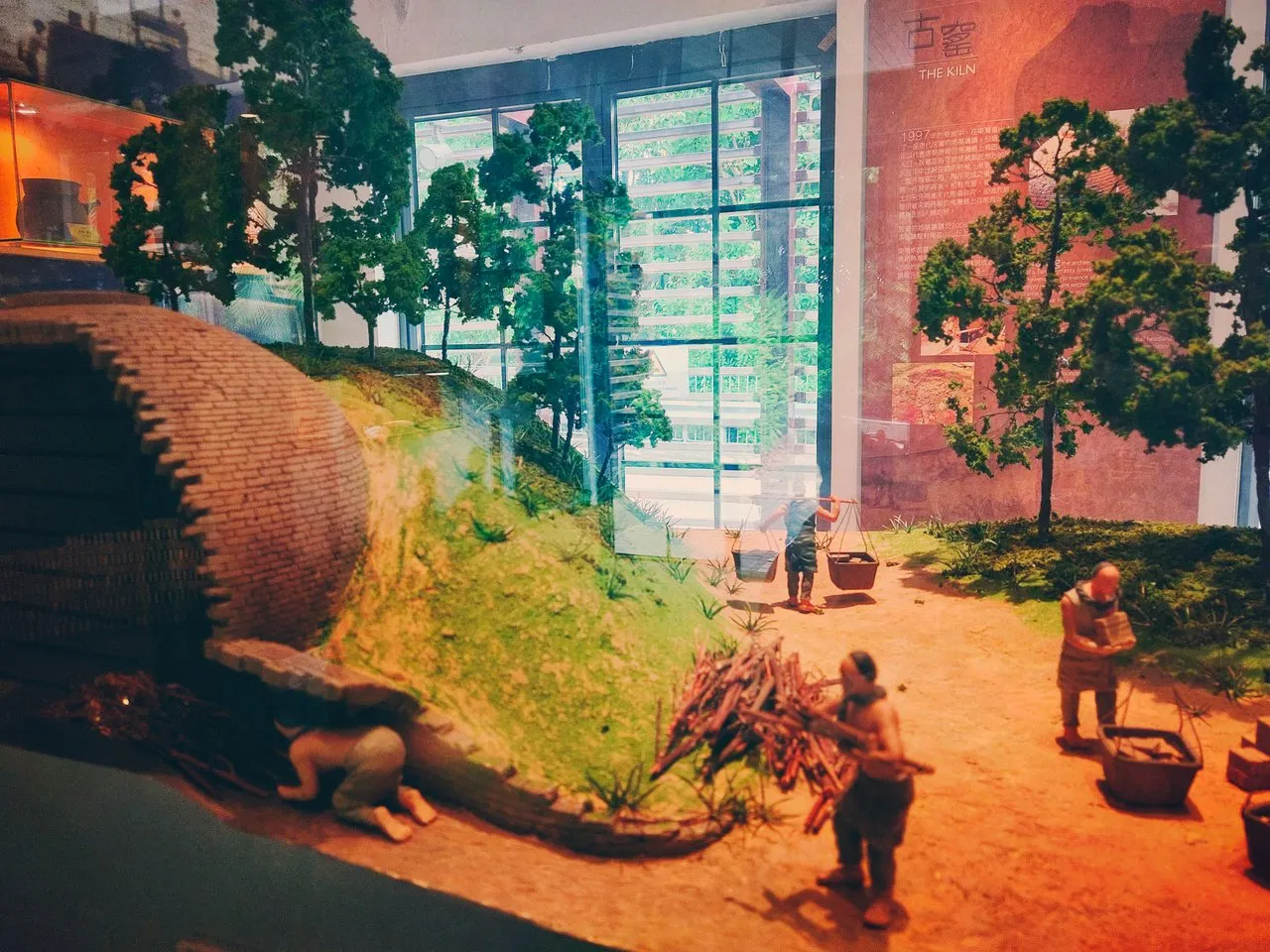 This miniature shows the neighborhood of prehistoric people on this island in the Old Age.
This miniature shows the neighborhood of prehistoric people on this island in the Old Age.These two reconstructed busts belong to the male and female ancient Ma Wan residents based on the excavated skulls from the tombs.

Female Ancient Ma Wan resident 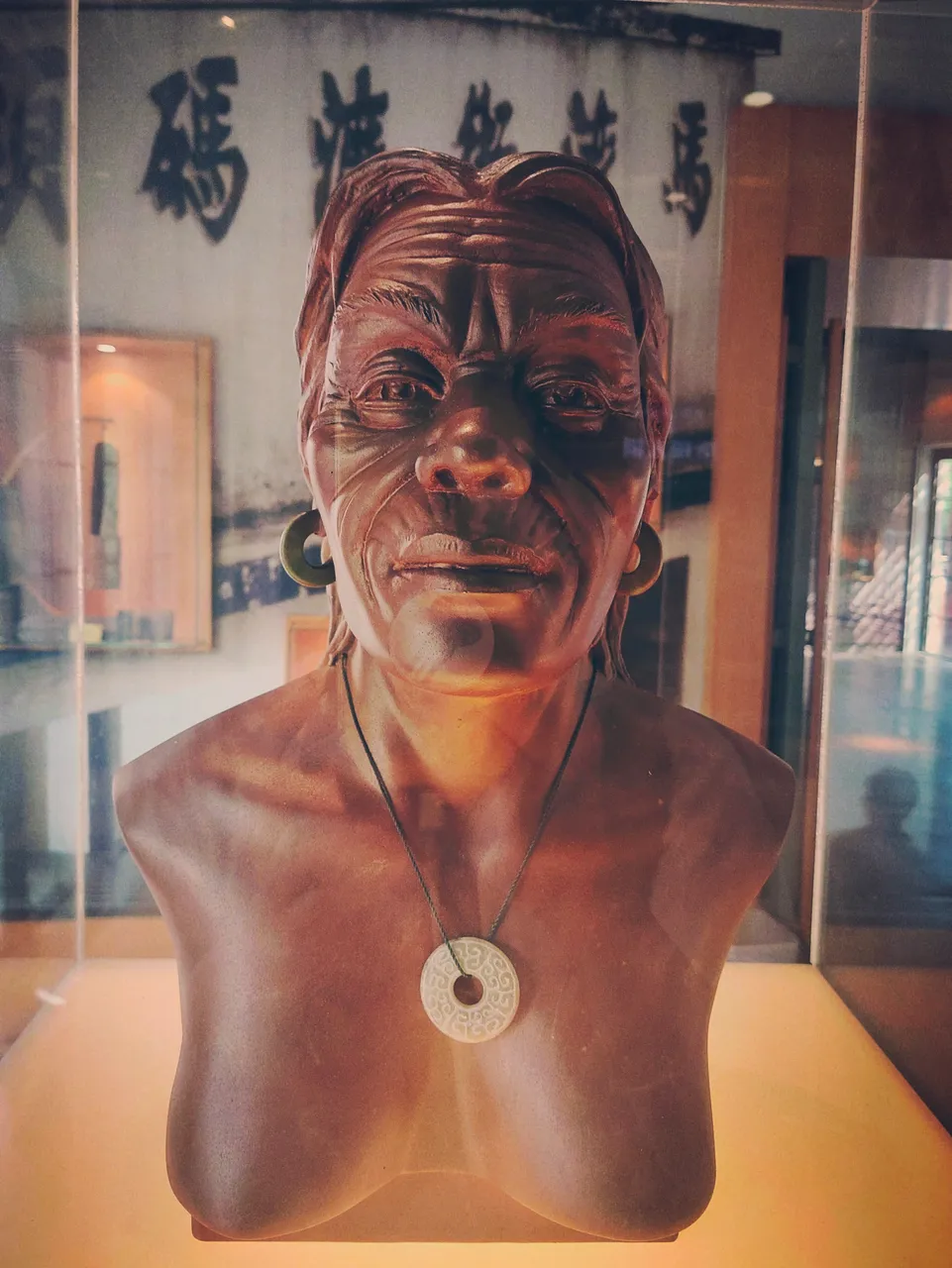 | Male Ancient Ma Wan resident 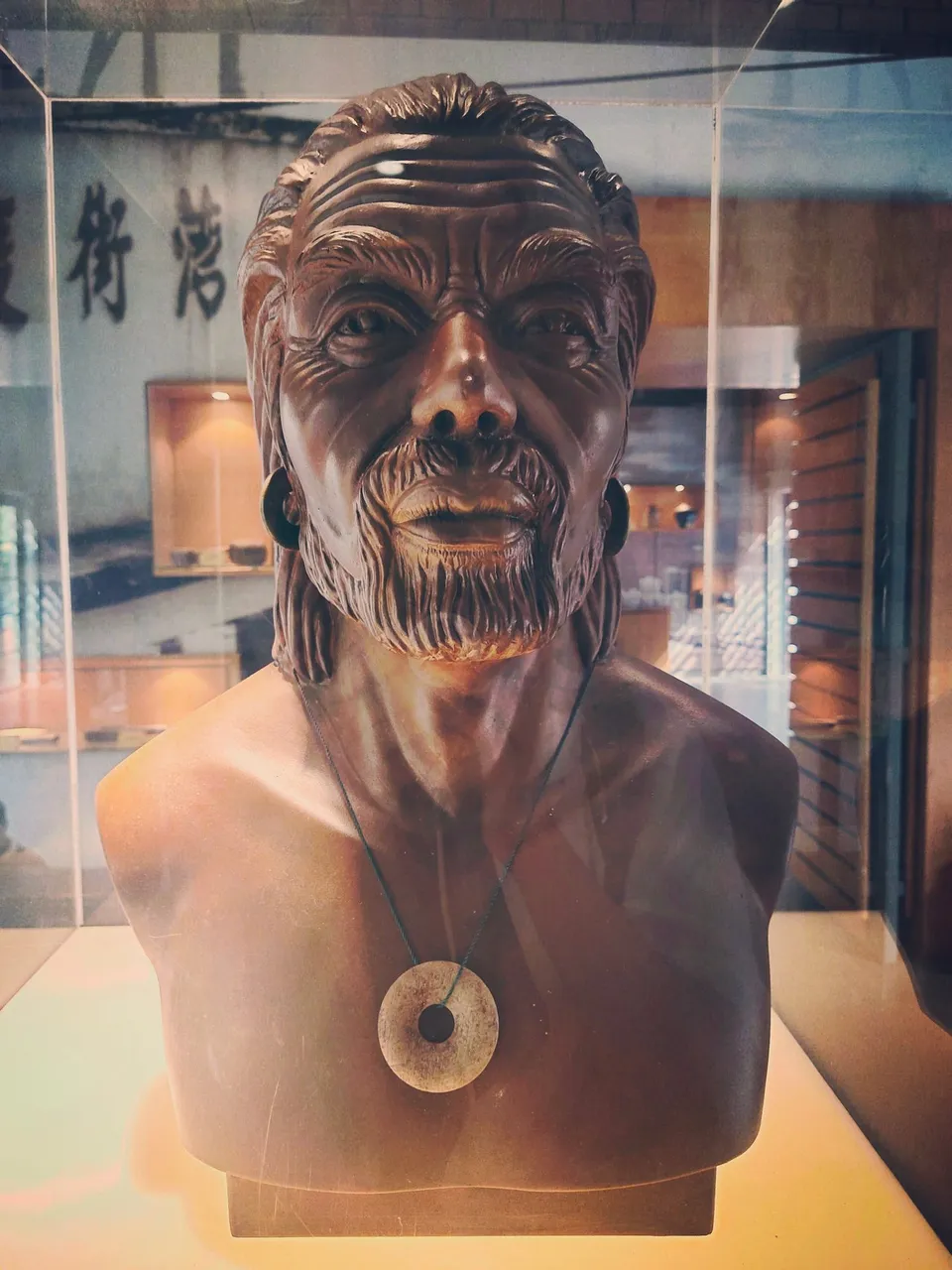 |
|---|
The study shows that human bones bear racial features such as an elongated cranial form, a lowered eye socket, a short face, a flat nose, a slice-shaped upper incisor, and an average height of 163 cm. Those features are similar to Neolithic human bones found in the Guangdong Province site, and those ancient people from Ma Wan belong to the same racial group that settled in the Pearl River Basin in Guangdong Province.
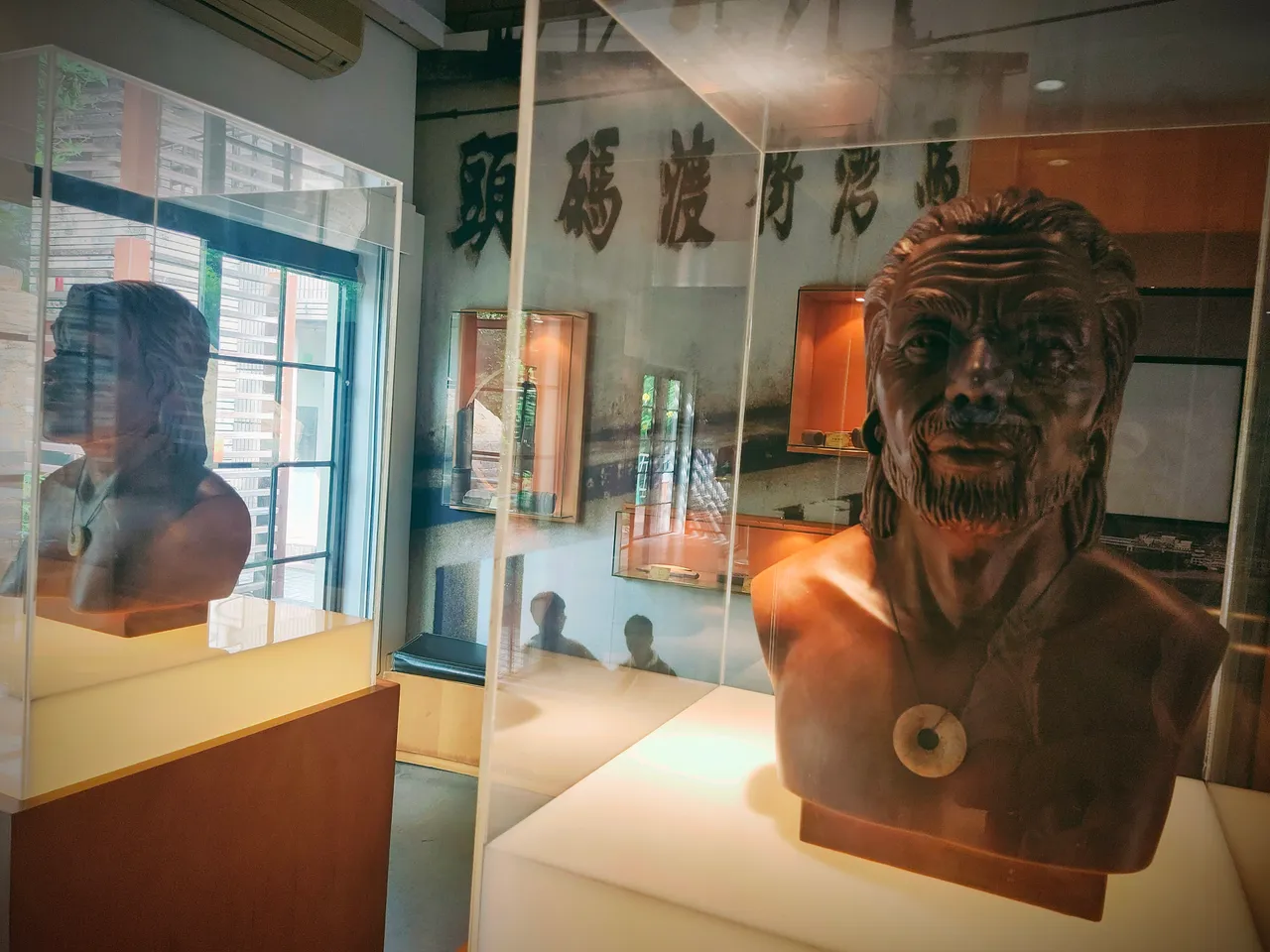
| You can refer to this photo for the reference taken in this heritage center. |  |
|---|
Meanwhile, at the back of the center are remains of the original brick kiln from the Qing Dynasty which is similar to an igloo house, but made from bricks. This brick kiln was reconstructed. It was originally found on the other side of the island, near the coastal area, but was relocated for display to this Heritage Center, which is the back part of Ma Wan Park.
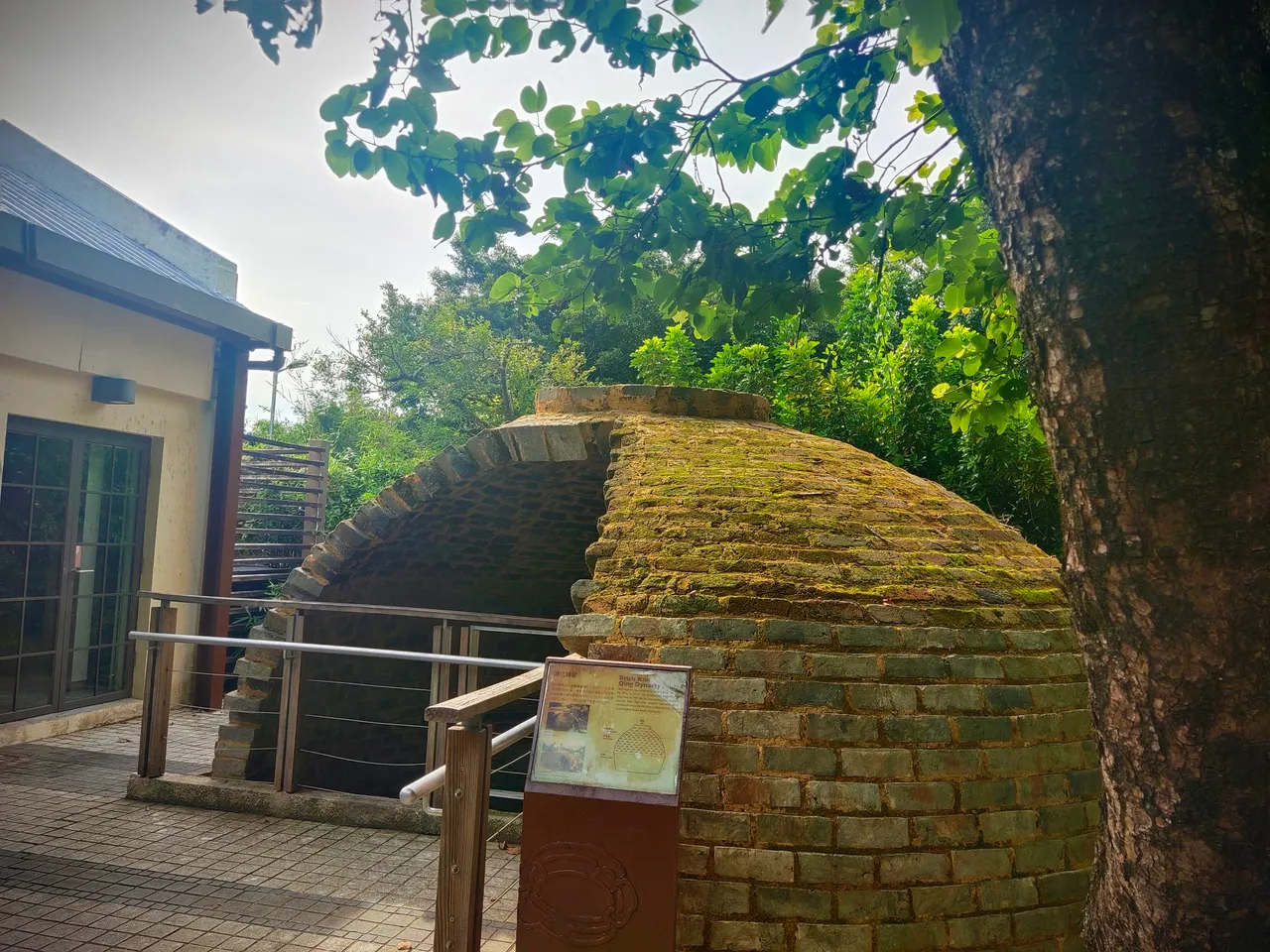
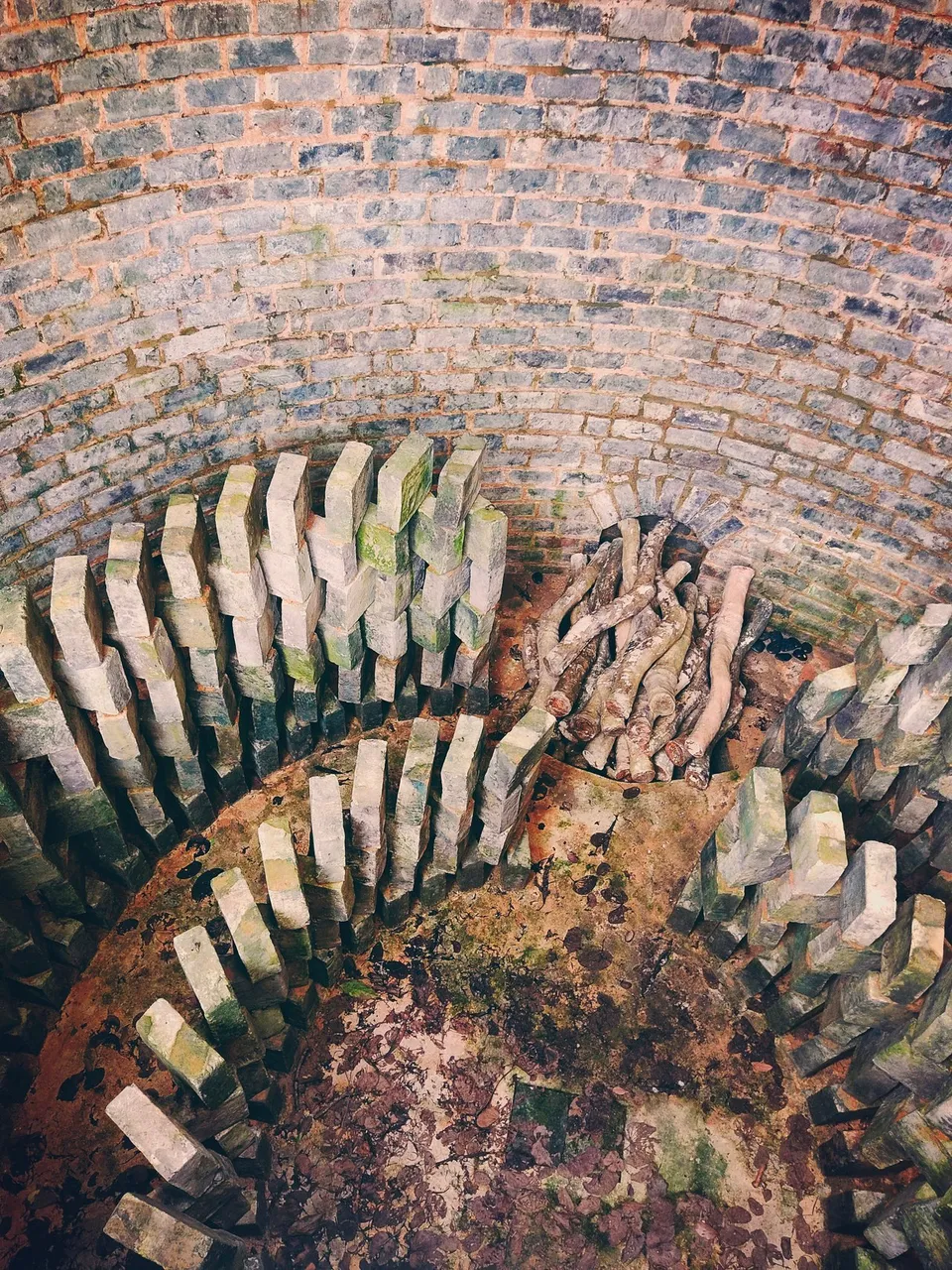 Inside view of the kiln with some bricks arranged neatly.
Inside view of the kiln with some bricks arranged neatly.Based on the information about it, during the old dynasty era, kilns were used as ovens for firing, burning, and cooling substances like clay or porcelain products, but some also used them for cooking food. The reconstructed kiln in the photo below consists of new bricks in the middle part, and in the upper part (orange in color) are the original bricks.

Another kiln remains on the other side is from Tang Dynasty, but only the ground floor, and has no brick roof. The researchers said this kiln might be a lime kiln used for making limestones since corals and shells were found near the site.

Reference photos
 |  |
|---|
Going back to the Heritage Center, some remains on display were also found during the excavation on the island in 1997. I could count the number of Historical relics on this site. Others were given to Antiquities and Monuments Office for preservation.
There are earthen cooking pots, wine jars, water vessels, utensils, porcelain dishes, vinegar bottles, a soup kettle, and others preserved on this site.
 Vinegar bottles and porcelain dishes
Vinegar bottles and porcelain dishes
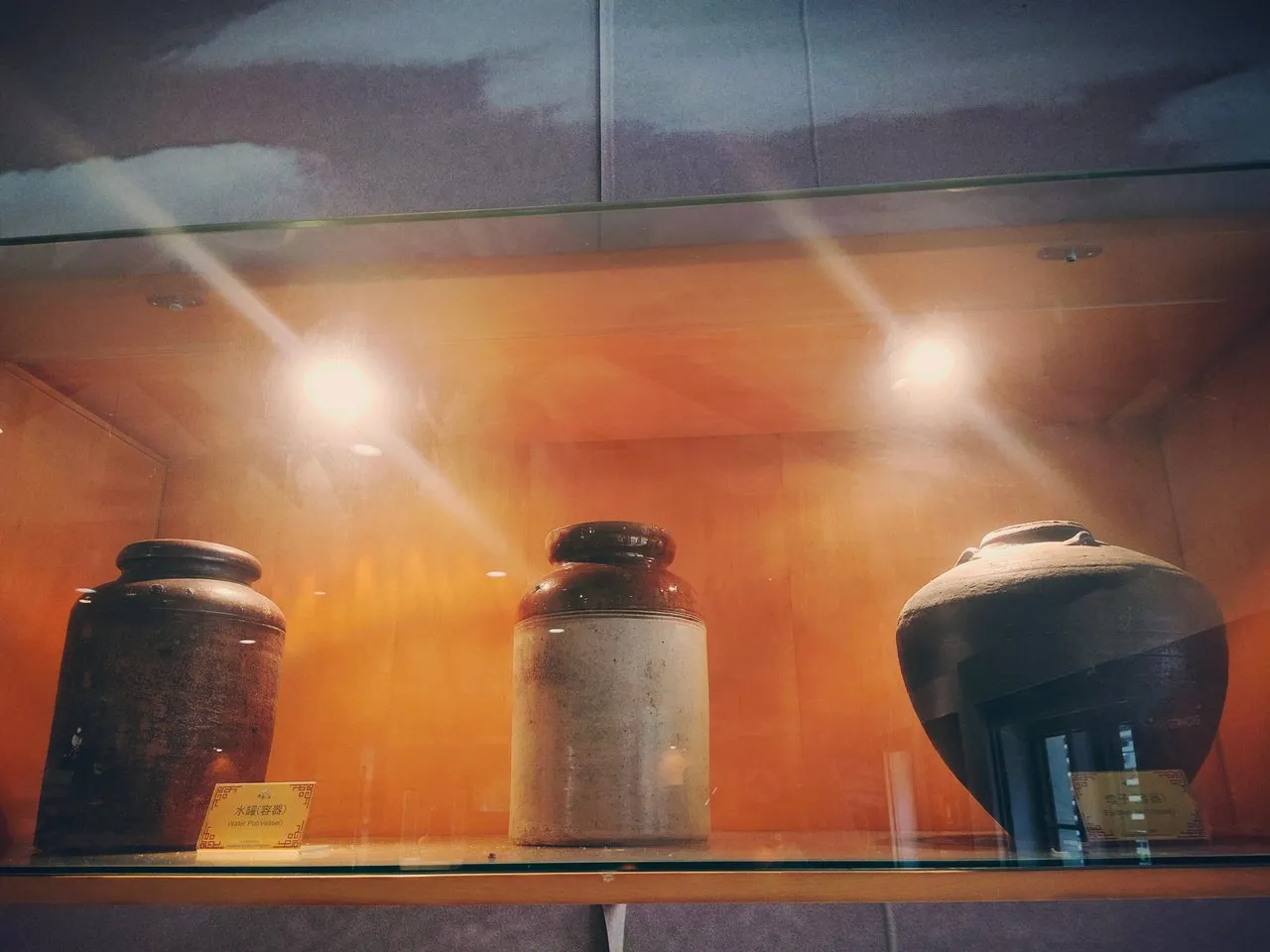 Water pots and jars
Water pots and jars
 Wine jars
Wine jars
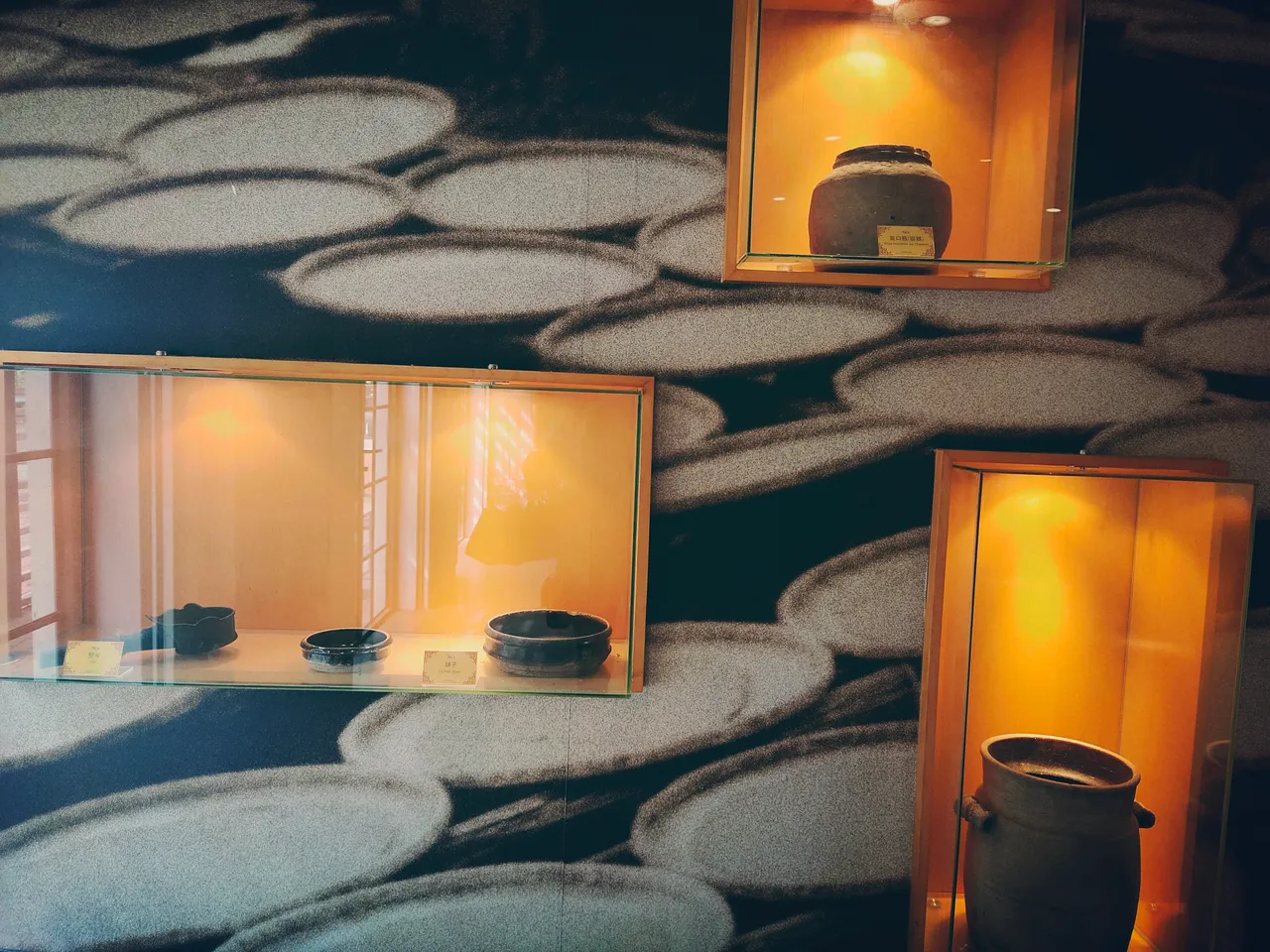 Different jars and bowls
Different jars and bowls
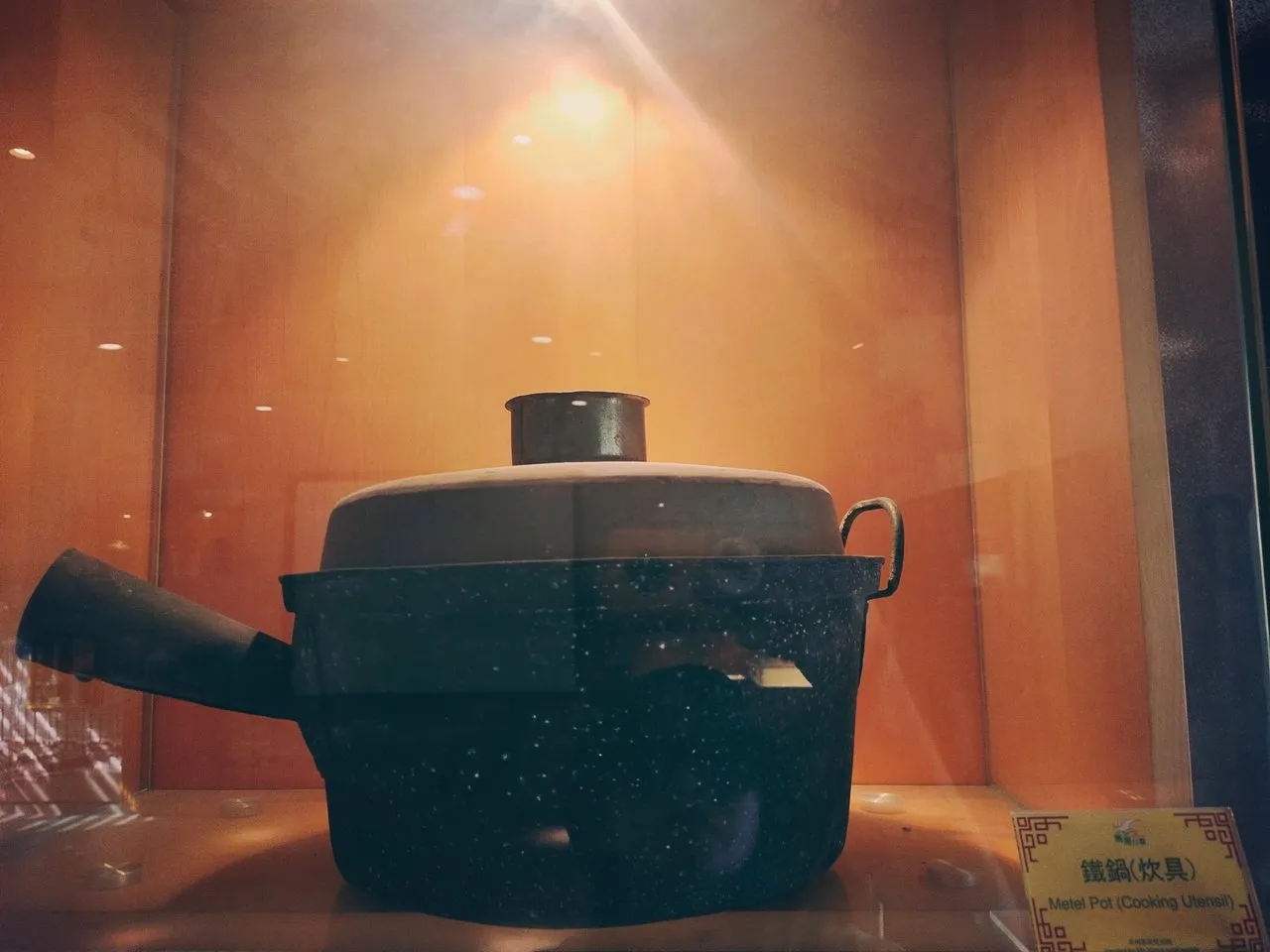 Metel pot for cooking
Metel pot for cooking
 Soup kettle and pickle jar
Soup kettle and pickle jar
A few traditional farm tools and a machine used in daily living were also found on the site.
This is a Winnowing machine used to process sun-dried grains and screened them out from the chaff.
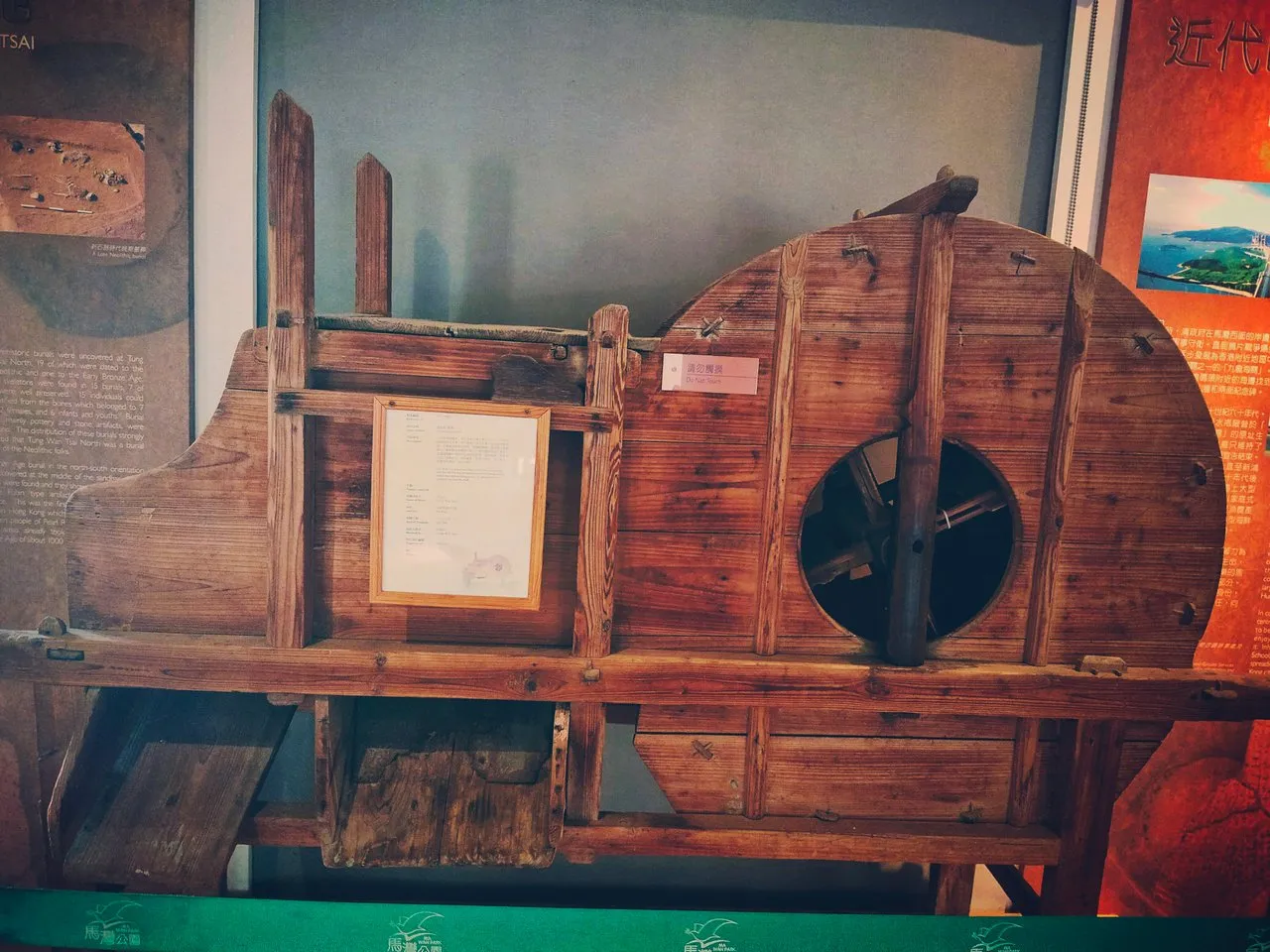
This is a wooden bucket and a stone mortar which I believe were used in fetching and storing water, and pounding grains or other food.

And more farming tools on display.
 Measuring apparatus
Measuring apparatus
 Wooden mallet
Wooden mallet
 Lantern
Lantern
This kerosene lamp reminded me of those we used back in the day when we had no electrical supply yet. But this looks authentic.
 Kerosene lamp
Kerosene lamp
It's just a small Heritage Center, but each historical relic tells much about the history and characters of the ancient people carved within those historical pieces. They will be preserved through the years and passed on from generation to generation to remind people of the significance of those in ancient times in human history.

It's been a while since I visited a historical place. And indeed, the detour I made led me to a worth-visiting place full of history.
Thanks for stopping by.
(All photos are mine)


Join her on her quest for self-discovery and wanderlust. If you like her content, don't hesitate to upvote, drop a comment, reblog, and follow for more wonderful adventures. |
|---|
You can also reach me on my socials and let's be connected: